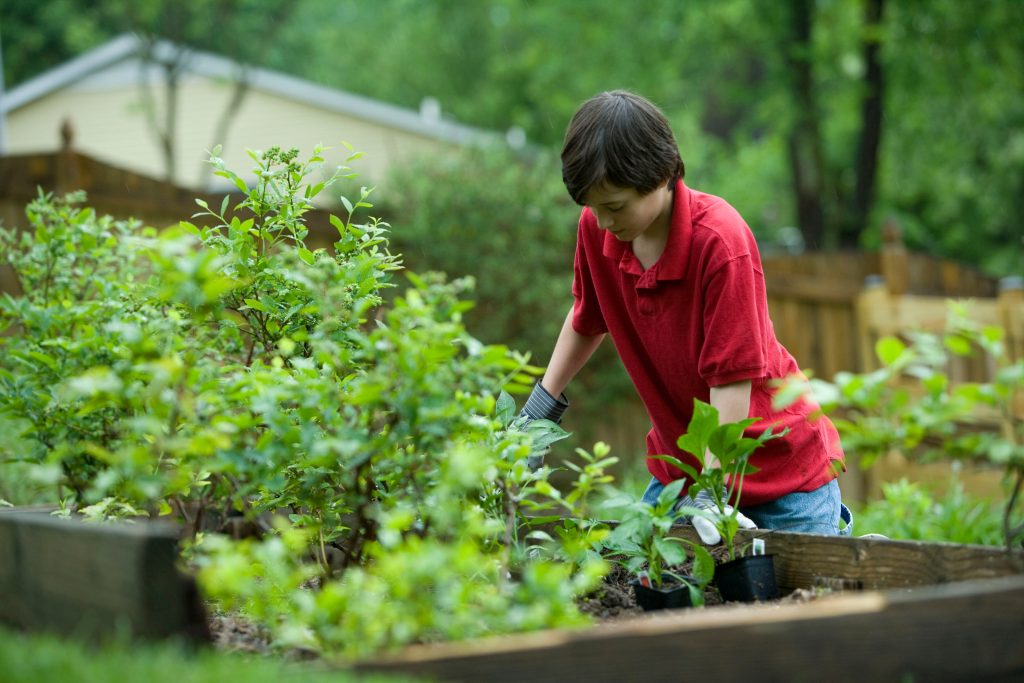Blueberry fertilizer: How and when to feed blueberries

Blueberries are among the easiest fruits for home gardeners to grow. They have few pests, don’t take up much room, and produce berries for many years. Blueberry plants are extremely cold hardy, and their care routine is not complicated. In a previous article, I shared information on proper blueberry pruning and received many follow-up comments and questions about how and when to apply blueberry fertilizer. This article offers insight on the best products to fertilize blueberries, the proper time to apply blueberry fertilizer, and how much of it to use.
Ideal conditions for growing blueberries

Before we talk specifics about blueberry fertilization, I’d like to touch on the importance of locating your blueberry bushes in ideal conditions for optimum growth and production. If your plants are sited properly and they receive enough sunlight and water, the need for fertilization won’t be as critical. And perhaps most importantly, if you don’t provide them with the right conditions, even if you properly fertilize, the plants won’t perform their best.
Here’s a quick rundown of the best conditions for growing blueberries:
- Site blueberry plants in full sun (a minimum of 8 hours per day).
- Grow at least two different varieties for maximum fruit set. Most blueberry varieties are not self-fertile, meaning their flowers cannot pollinate themselves. They need the pollen from a different variety to make quality fruits. If you only have one blueberry plant, you likely won’t get many fruits.
- Blueberries evolved in regions with nutrient-poor, acidic soils. Because of this, having the ideal soil pH level is key to plant health and productivity. Without the right soil pH, your blueberries won’t be able to access certain nutrients from the soil, regardless of you ensuring the plants are properly fertilized. The target soil acidity level for blueberries is between 4.5 and 5.1. Here’s an article on how to test and adjust your soil pH.
- The roots of blueberry plants do not like poorly-drained soils. Don’t plant them in low-lying areas that are boggy.
- Soils high in organic matter are best. Add composted leaves, compost, well-rotted manure or other organic matters to the soil prior to planting blueberries if possible.

When to use blueberry fertilizer
Blueberries do not have high nutrient needs. In fact, they are very sensitive to over-fertilization and excessive nutrient levels in the soil. Don’t overdo it. Most nutrition-related problems are easy to prevent by making sure your soil pH is correct. As mentioned above, blueberries require acidic soils, just like azaleas and rhododendrons. It is critical to their success. Before doing any blueberry fertilization, start by testing the soil pH. It’s an inexpensive, easy, and very important step. Here’s a simple home test you can use, or you may be able to purchase a soil test kit from your state’s cooperative extension service or your local governmental agricultural agency.
Be prepared to re-test the pH of the soil beneath your blueberries every 4 to 5 years. The results will not only tell you your existing soil pH level, but they will also provide suggested fertilizer types and amounts for the following growing season. The advice in this article will help you determine blueberry fertilizer needs for the years in between soil tests.

As mentioned, the most critical aspect of blueberry fertilization is making sure your soil stays in the ideal pH range. Soil pH is so important because it determines the availability of almost all of the nutrients contained within the soil. At certain pH levels different nutrients are either tied up and unavailable, or they are readily available for plant use.




Leave a Reply